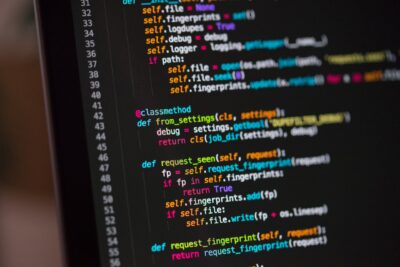The world of code, like our universe, is constantly evolving and expanding: new technologies, methods of solving old problems, and opportunities to learn are emerging. Today, many information technology professions require a confident command of basic programming languages.
A programming language is essential for almost everything, whether it’s web development, machine learning, or data analysis. And every year we see the ranking of these languages fluctuate depending on the demand and popularity among developers. According to GitHub and TIOBE, there are at least 253 programming languages today, with JavaScript and Python leading the way.
JavaScript is not just a programming language, but a revelation of the IT world of the second half of the 20th century. No one would have guessed that JS would remain a leader, and have no competitors in its field. It is considered to be the most popular programming language in the world and is in high demand among various organizations. JS was originally only used for developing web browsers, but now it is used to create server-side websites and non-browser applications.
JS was created in 1995 in America by programmer Brendan Eich and was originally known as LiveScript. However, at the time, Java was the most popular language, so JS was promoted as Java’s “little brother.” Over time, JavaScript became a fully independent language.
By analogy, we can say that JS is a kind of “wizard” that animates the web page and browser: for example, the already familiar HTML is responsible for the markup of the site, CSS is responsible for its appearance, and finally JS implements all the processes. Programmers believe it takes considerably less time to write a program with JS.
Adding “behavior” elements to web pages is the basis of the ubiquity of JS. Many of these “behaviors” have been mentioned as:
- slides
- drop-down menus
- animations
- audio
- video
- show or hide information
- Zoom in/out
- display a timer or countdown
- gallery carousels on home pages and much more
JS is used every day, and we don’t even realize how often. For example, you’ve visited a site, clicked with your mouse, or the page has finished loading, then JS responds directly to those changes by performing certain functions. The same works with data entry on the site: JS allows you to check all required fields (name, address, e-mail) and, finally, the correctness of their filling (in the column where you need to write letters, the code will not allow to put a number).
It’s rather difficult to single out certain industries where JS is in demand because it is used in absolutely all spheres from business services to advertising and marketing. So now it is really impossible to imagine life without JS, because an analogue with such an elaborate system at the moment cannot be found, although we should not forget about the existence of Python, which is the easiest to use, but does not have such an extensive set of tools (e.g. script support by popular browsers, integration with page layout) as JS.
In recent years, Python has remained the favorite language of almost everyone who is just starting out in programming. The main reason for this is the simple syntax that makes Python easy to read, learn, and use.
It has open source code, extensive support modules, convenient data structures, and graphical interfaces for desktop applications. Unlike some other languages, it uses simple line breaks instead of symbols to define blocks of code. Python also helps speed up development with built-in classes and functions, as well as an extensive set of libraries that make writing code faster and easier. In addition, because the language is interpreted, it becomes possible to execute and test code immediately after it is written without an intermediate compression process.
The versatility of Python allows it to be used in a variety of industries. Quite often it can be found:
- in data analysis (reporting and analysis);
- machine learning;
- web development;
- Financial analysis (due to its data processing capabilities and libraries designed for financial analysis);
- Desktop applications;
- Business applications (Python underpins business software such as Tryton and Odoo. These tools are used to develop businesses and can perform accounting, inventory, and customer relationship management);
- development of 2D image and 3D animation packages such as Blender, Inkscape and Autodesk.
Depending on the intended use of the programming language, the choice will depend on either Python or JS.
Developers and researchers alike have divergent views on the choice of programming language: some believe that Python is much better because it has many libraries for scientific computing, data analytics, and machine learning, whereas JS does not. Moreover, Python supports many numeric data types, such as int, float, and fixed-point decimals, while JS works mostly with floating-point variables. In general, Python is considered to be the best language to accomplish tasks because the time spent is minimized, while JS will require much more time.
Others are more inclined to think that JS is much better for website development than Python for one simple reason: JS runs in the browser, while Python is a back-end server-side language. While Python is partially applicable to website development, you can’t use it separately as JS.
However, it’s safe to say that both of these languages will lead in the coming years for the simple reason that Python has both ease of learning and a huge number of libraries and breadth of use, while JS has frameworks for building applications and websites, which is essentially the only programming language for browsers. Python will dominate the world of machine learning, data science, and neural networks, and JavaScript will dominate the world of real-time web application development.





